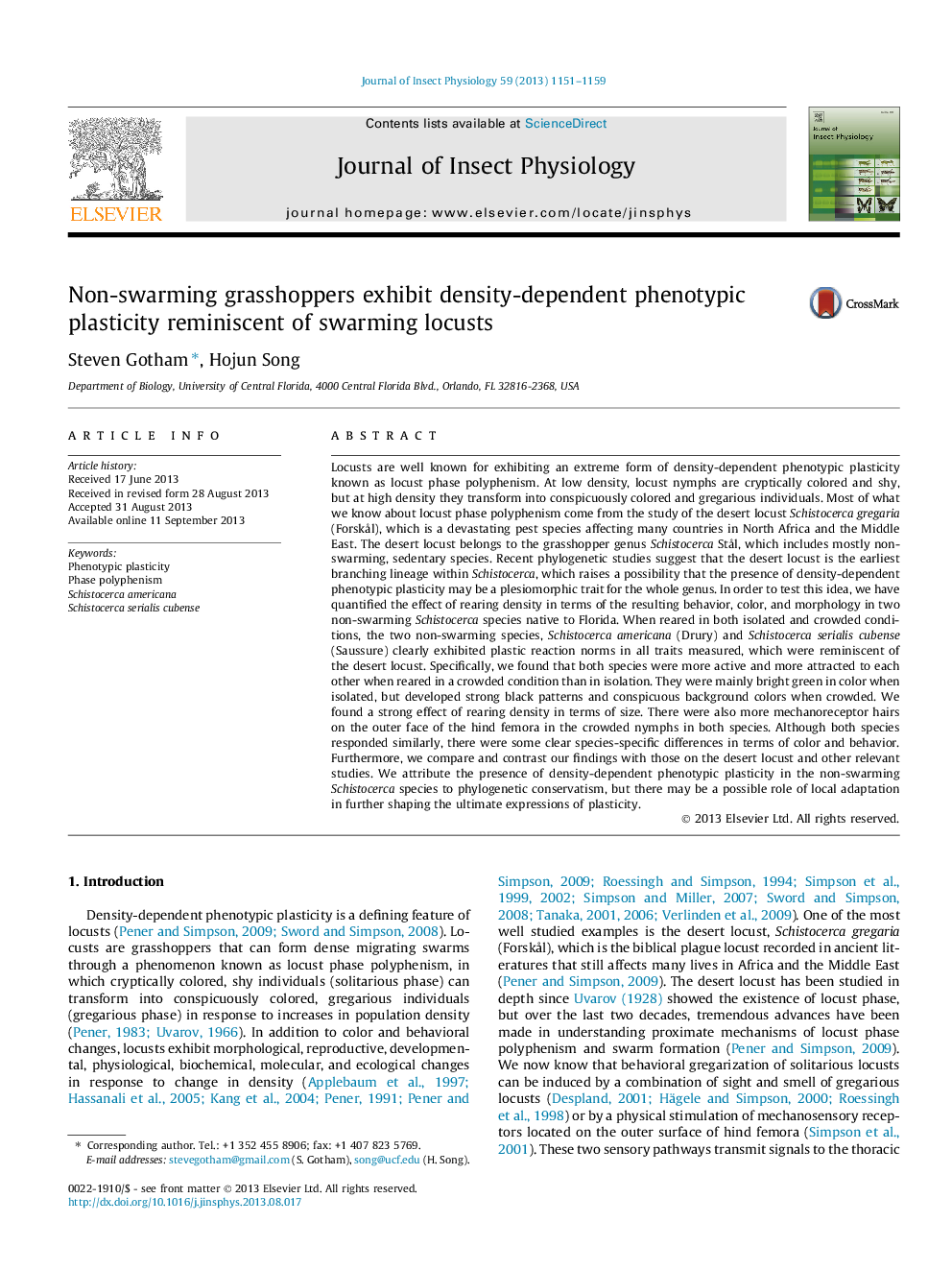| Article ID | Journal | Published Year | Pages | File Type |
|---|---|---|---|---|
| 2840480 | Journal of Insect Physiology | 2013 | 9 Pages |
•We quantified density-dependent phenotypic plasticity in two grasshopper species.•Non-swarming Schistocerca species show density-dependent phenotypic plasticity.•Both species change behavior, color, and morphology in response to crowding.•There are similarities and differences in reaction norms between the two species.•Our findings may be attributed to phylogenetic conservatism within the genus.
Locusts are well known for exhibiting an extreme form of density-dependent phenotypic plasticity known as locust phase polyphenism. At low density, locust nymphs are cryptically colored and shy, but at high density they transform into conspicuously colored and gregarious individuals. Most of what we know about locust phase polyphenism come from the study of the desert locust Schistocerca gregaria (Forskål), which is a devastating pest species affecting many countries in North Africa and the Middle East. The desert locust belongs to the grasshopper genus Schistocerca Stål, which includes mostly non-swarming, sedentary species. Recent phylogenetic studies suggest that the desert locust is the earliest branching lineage within Schistocerca, which raises a possibility that the presence of density-dependent phenotypic plasticity may be a plesiomorphic trait for the whole genus. In order to test this idea, we have quantified the effect of rearing density in terms of the resulting behavior, color, and morphology in two non-swarming Schistocerca species native to Florida. When reared in both isolated and crowded conditions, the two non-swarming species, Schistocerca americana (Drury) and Schistocerca serialis cubense (Saussure) clearly exhibited plastic reaction norms in all traits measured, which were reminiscent of the desert locust. Specifically, we found that both species were more active and more attracted to each other when reared in a crowded condition than in isolation. They were mainly bright green in color when isolated, but developed strong black patterns and conspicuous background colors when crowded. We found a strong effect of rearing density in terms of size. There were also more mechanoreceptor hairs on the outer face of the hind femora in the crowded nymphs in both species. Although both species responded similarly, there were some clear species-specific differences in terms of color and behavior. Furthermore, we compare and contrast our findings with those on the desert locust and other relevant studies. We attribute the presence of density-dependent phenotypic plasticity in the non-swarming Schistocerca species to phylogenetic conservatism, but there may be a possible role of local adaptation in further shaping the ultimate expressions of plasticity.
Graphical abstractFigure optionsDownload full-size imageDownload as PowerPoint slide
